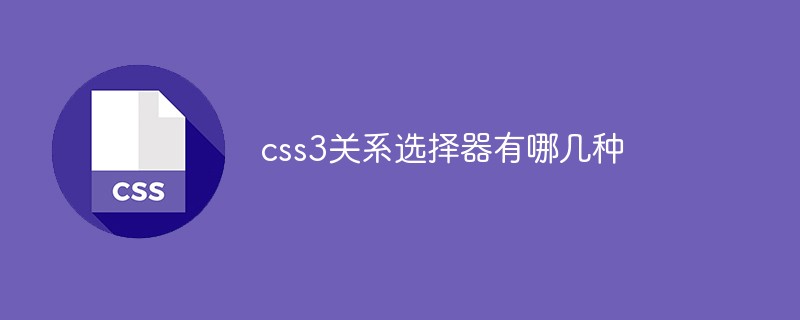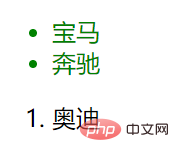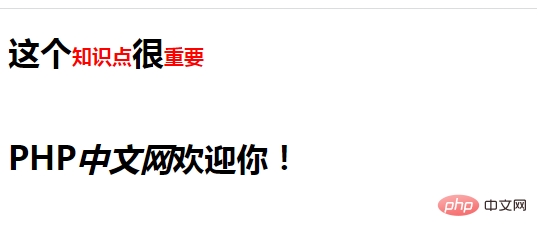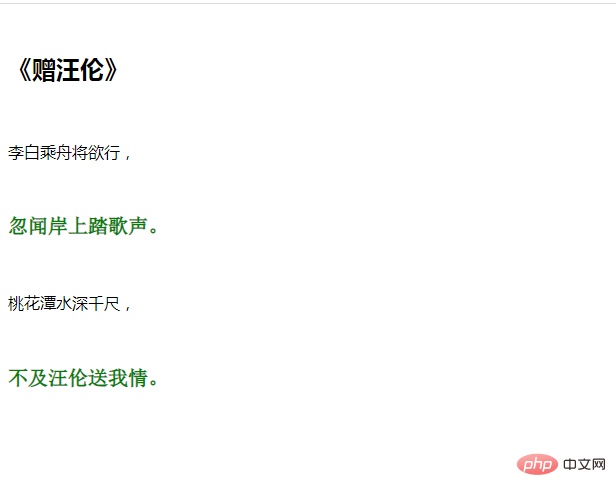
There are 4 types of css3 relationship selectors: 1. The inclusion selector "E F" selects all F elements contained by the E element; 2. The descendant selector "E>F" selects all elements that are E The direct child element F; 3. The adjacent selector "E F" selects the F element immediately following the E element; 4. The sibling selector "E~F".

The operating environment of this tutorial: Windows 7 system, CSS3&&HTML5 version, Dell G3 computer.
Relationship selectors in CSS3 mainly include include selectors, descendant selectors, adjacent selectors and sibling selectors:
Include selectors Connected by a space " " The selector is connected by the symbol "
We will explain it in detail below.
Select all F elements contained by E elements, separated by spaces
ul li{color:green;}
<ul>
<li>宝马</li>
<li>奔驰</li>
</ul>
<ol>
<li>奥迪</li>
</ol><!DOCTYPE html>
<html>
<head>
<meta charset="UTF-8">
<title>CSS3子代选择器用法</title>
<style>
h1 > strong {
color: red;
font-size: 20px;
font-family: "微软雅黑";
}
</style>
</head>
<body>
<h1>这个<strong>知识点</strong>很<strong>重要</strong></h1>
<h1>PHP<em><strong>中文网</strong></em>欢迎你!</h1>
</body>
</html>
<!DOCTYPE html>
<html>
<head>
<meta charset="UTF-8">
<title>CSS3紧邻兄弟选择器用法</title>
<style type="text/css">
p + h2{
color: green;
font-family: "宋体";
font-size: 20px;
}
</style>
</head>
<body>
<body>
<h2>《赠汪伦》</h2>
<p>李白乘舟将欲行,</p>
<h2>忽闻岸上踏歌声。</h2>
<p>桃花潭水深千尺,</p>
<h2>不及汪伦送我情。</h2>
</body>
<!DOCTYPE html>
<html>
<head>
<meta charset="UTF-8">
<title>CSS3普通兄弟选择器~用法</title>
<style type="text/css">
p ~ h2{
color: pink;
font-family: "微软雅黑";
font-size: 20px;
}
</style>
</head>
<body>
<body>
<h2>《赠汪伦》</h2>
<p>李白乘舟将欲行,</p>
<h2>忽闻岸上踏歌声。</h2>
<h2>桃花潭水深千尺,</h2>
<h2>不及汪伦送我情。</h2>
</body>
</html> As can be seen from the picture, all sibling elements h2 after the p element have the styles set in the code applied. (Learning video sharing:
As can be seen from the picture, all sibling elements h2 after the p element have the styles set in the code applied. (Learning video sharing: css video tutorial
)The above is the detailed content of What are the types of css3 relationship selectors?. For more information, please follow other related articles on the PHP Chinese website!